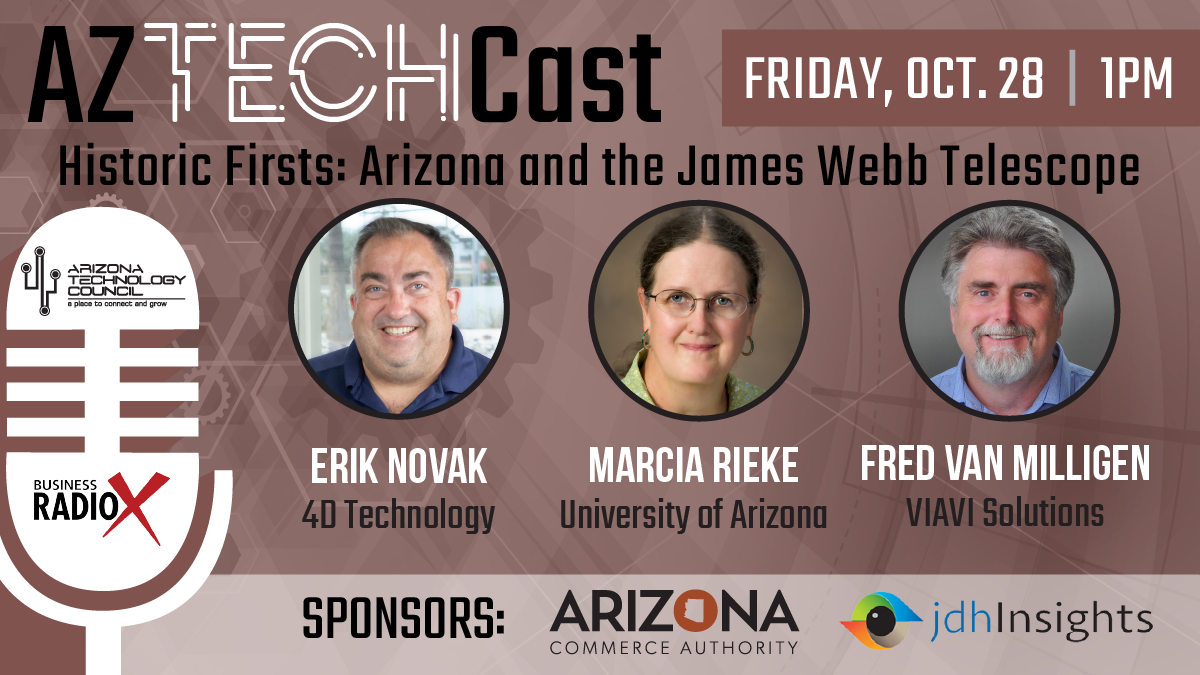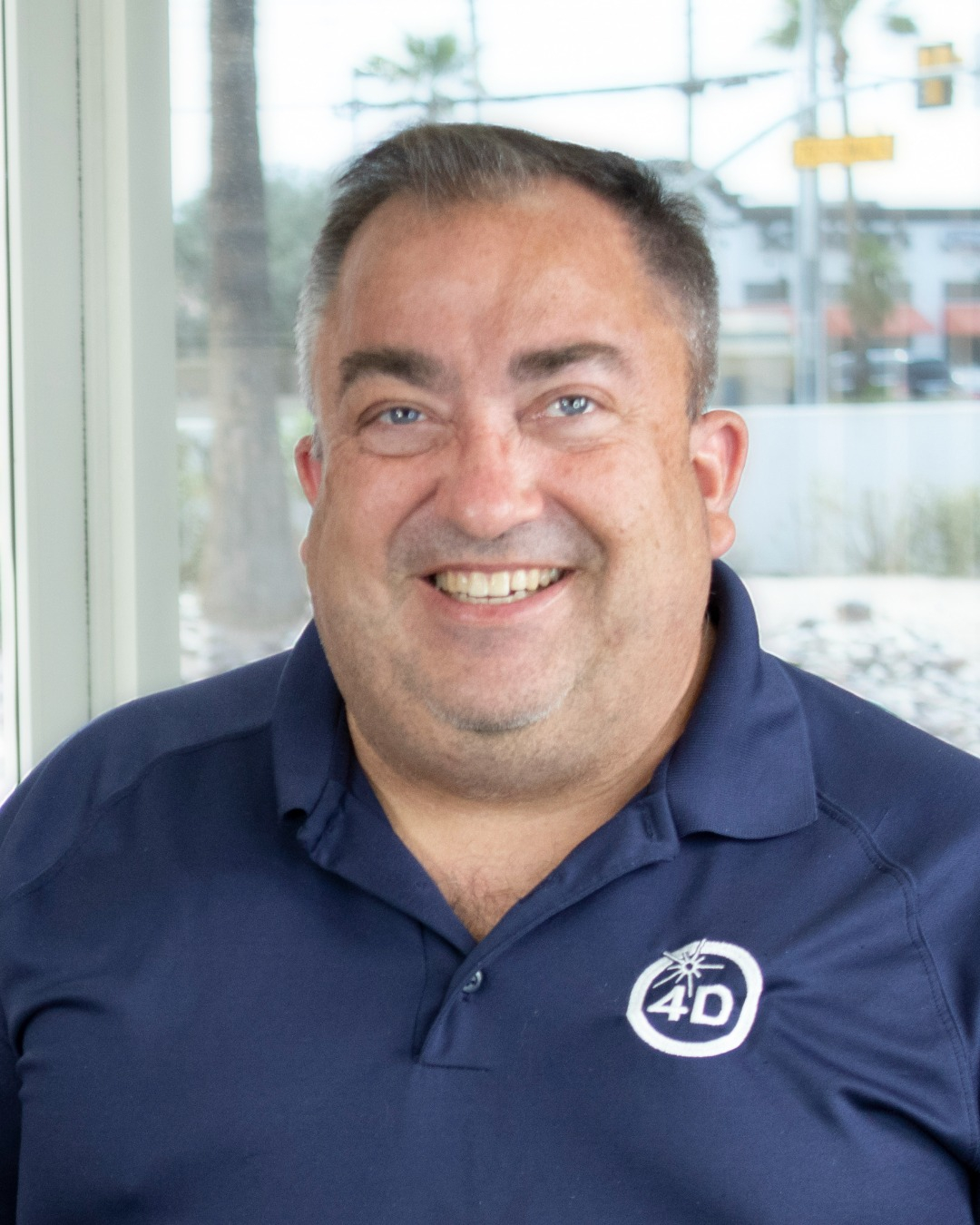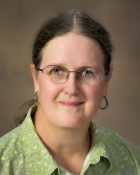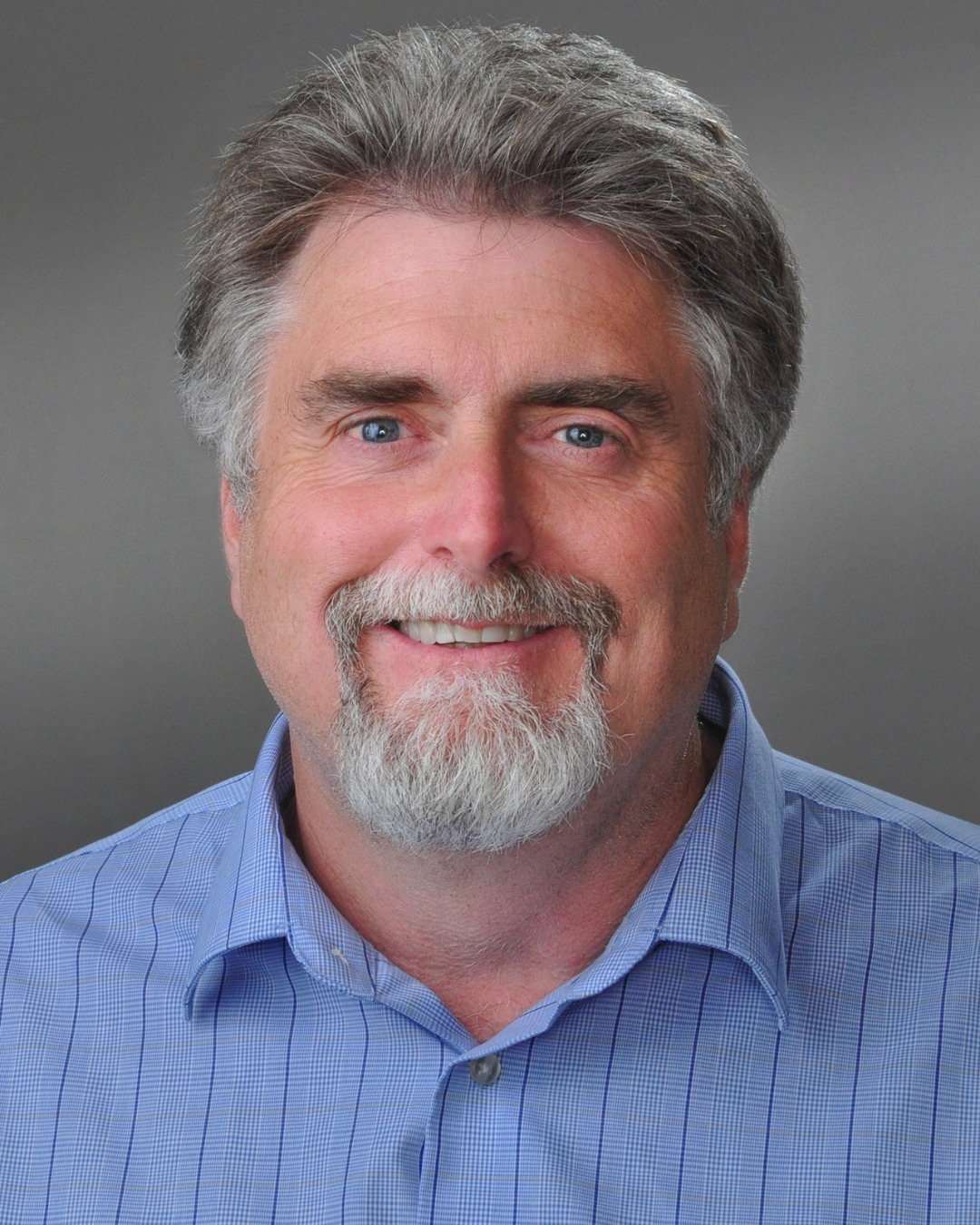October 2022 TechCast | Historic Firsts: Arizona and the James Webb Telescope

Subscribe to AZTechCast today so you never miss an episode.
On December 25, 2021, NASA launched the James Webb Space Telescope (JWST), the largest and most complex space telescope ever built. Four days later, Webb’s massive sunshield deployed and within weeks, its primary mirror started unfurling. On August 12, 2022, Webb’s first images were released, and our view of the universe was forever changed. But what did it take to get here?
The October 2022 episode of the Arizona Technology Council’s AZTechCast podcast featured experts including Erik Novak, general manager at 4D Technology; Marcia Rieke, professor of astronomy at the University of Arizona; and Fred Van Milligen, vice president, research and development at VIAVI Solutions. These leaders joined Karen Nowicki, president and owner of Phoenix Business RadioX, and Steve Zylstra, president and CEO of the Arizona Technology Council, in discussing the nearly insurmountable challenges they faced, the exciting innovations developed and the cosmic collaborations that led to the most successful space telescope ever launched.

Throughout this hour-long episode, the panel of three experts convened virtually to introduce themselves, describe the direct role that they and their organizations played in building the JWST and explain how Arizona’s optics and photonics and aerospace industries really drove the telescope’s development even though NASA is headquartered on the other side of the country. For those unfamiliar with optics and photonics, the speakers defined this field as the study of light, as well as the generation, detection, and manipulation of light photons through emission, transmission, modulation, signal processing, switching, amplification and sensing. But beyond the dictionary definition, they emphasized that optics and photonics touch the lives of every day Arizonans through the cameras on their cell phones, the semiconductors that power their appliances and the light emitted from their car headlights.
As the general manager of 4D Technology, Erik explained that the company specializes in instruments that measure the surfaces of optical features in difficult environments, like a factory floor or a cryogenic freezer. By using interferometer principles combined with unique, patented technology, 4D Technology produced four optical measurement systems that were essential in qualifying the JWST’s primary mirror array, secondary mirror, backplane structure and the primary mirror segments. It was pivotal for each of the four components to be identical, requiring a high level of precision. Erik mentioned that his team faced a number of technical challenges during this process, simply because of the level of precision and the fact that the data and measurements needed to be in a common language that all collaborators could understand. All stakeholders needed to be on the same page for the technology to work and for the telescope to successfully capture the images and data long sought after.
Since she was a child, Marcia read a lot of science fiction and was fascinated by space. During college (which was shortly after the moon landing), she took an astronomy class that changed the course of her career. Marcia has worked on several previous space missions during her time as a professor at The University of Arizona (UA), and insists that UA is the best place to study astronomy from the ground. As far as JWST goes, Marcia was the leader of a research team that developed a camera for JWST, which was worked on in collaboration with Lockheed Martin’s Advanced Technology Center in Palo Alto, CA. According to Marcia, the JWST is more powerful than Hubble because its mirrors and instruments can withstand colder temperatures, enabling it to better detect exoplanets and more accurately identify whether there is life on other planets. Marcia also stated that the JWST allows astronomers to see much further back in time than Hubble can by about 300 million years.
This brings us to Fred, whose fascination with the JWST hinges on the fact that its technology is so state-of-the-art that it gives astronomers a glimpse into distant history. As fast as light is, images captured by the JWST give perspective from millions of years ago. In fact, the JWST is getting us within 100 million years of the Big Bang, a feat the Hubble Telescope cannot achieve. Originally founded as the Optical Coating Laboratories Inc, VIAVI Solutions has been a leading innovator in the thin-film optical components industry for over 70 years. To help support JWST’s development, VIAVI Solutions coated four of the components within the Near Infrared Camera (NIRCam) and created the beam splitter that splits long and short wavelengths. Fred insists that because of Southern Arizona’s rich optics and photonics company presence, Arizona is set up to be an optics and photonics hub on the forefront of technology innovation in the industry for decades to come.
Though all three speakers and their teams faced a great deal of technical challenges while working on the JWST, they agreed that the long and complex journey has been extraordinarily gratifying and rewarding. To make sure that the telescope continues capturing never-before-seen images and data, the speakers emphasized that optics and photonics companies must engage with state universities to draw in next-generation professionals interested in studying light, engineering, science and space.
To learn more, register for Arizona Photonics Days in January 2023 and watch the replay below for the full conversation!
|
ERIK NOVAK |
MARCIA RIEKE |
FRED VAN MILLIGEN |
About AZTechCast
The official podcast of the Arizona Technology Council, AZTechCast is dedicated to covering innovation and technology in Arizona and beyond. Through the art of the connected conversation, AZ TechCast’s hosts and guests share success stories, tech news and analysis about the region’s leading startups, companies and emerging technologies, as well as the latest industry trends and critical issues propelling Arizona’s growing technology ecosystem. Visit www.aztechcouncil.org/techcast to learn more or to listen to recent episodes.
About Phoenix Business RadioX
Karen Nowicki is the owner and president of Phoenix Business RadioX. Amplifying the voice of business, Phoenix Business RadioX helps local businesses and professional associations get the word out about the important work they’re doing to serve their market, profession and community. A successful author, speaker and the creator of Deep Impact Leadership™ and SoulMarks Coaching™, Nowicki is a two-time recipient of the prestigious national Choice Award® for her book and personal development retreat. In addition, Nowicki has been an expert guest on regional TV and radio shows, including Fox Phoenix Morning Show, Sonoran Living, Good Morning Arizona, The Chat Room and Mid-Day Arizona. Recognized for her leadership and business acumen, she has been a regular contributor to many print and online magazines – publishing articles and blogs for business and education.













